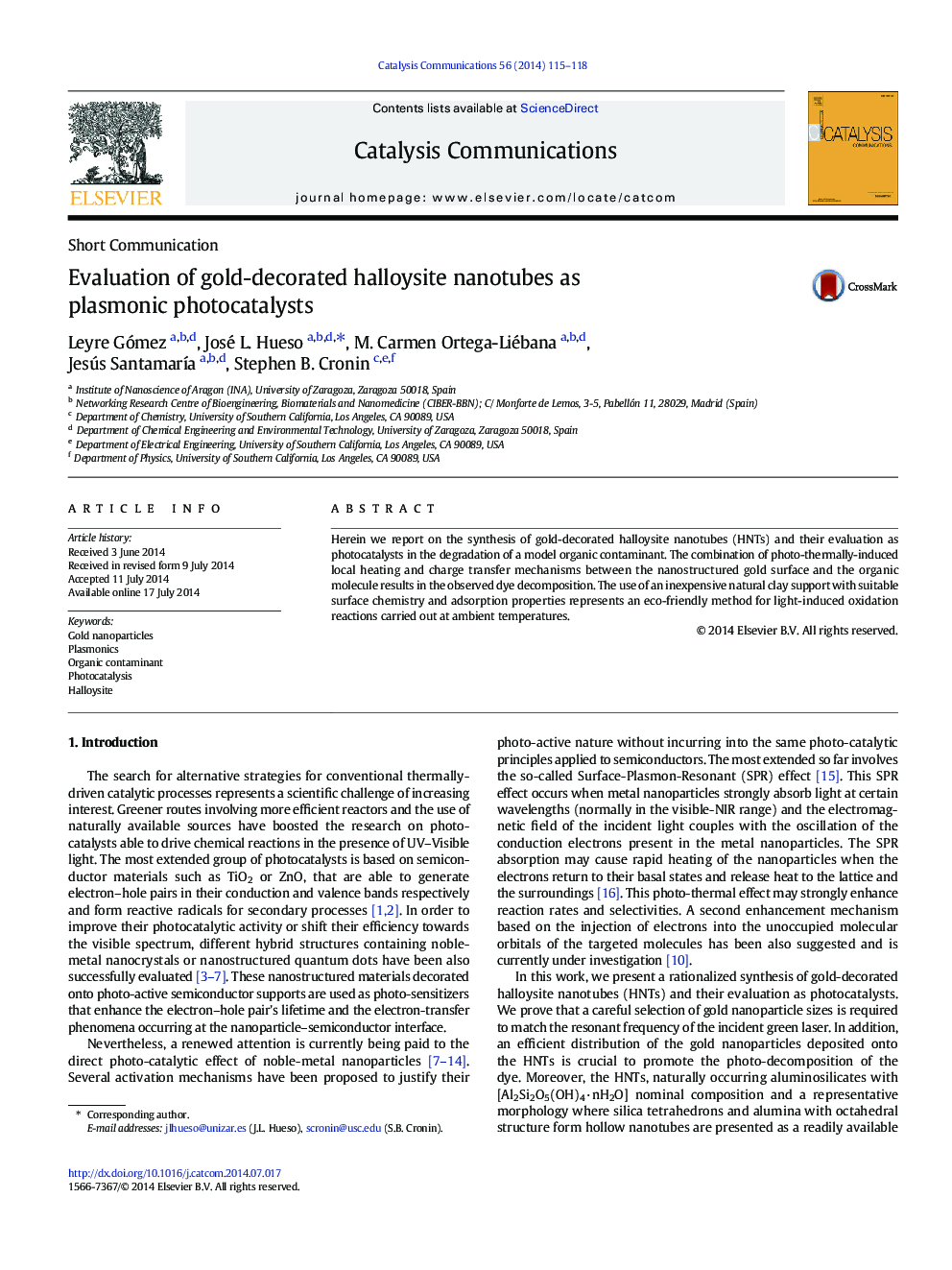| Article ID | Journal | Published Year | Pages | File Type |
|---|---|---|---|---|
| 49440 | Catalysis Communications | 2014 | 4 Pages |
•Tubular halloysite nanoclay is chemically modified for gold nanoparticle attachment.•Plasmonic-driven photocatalytic degradation of organic dyes•High decomposition rates using visible light ranges
Herein we report on the synthesis of gold-decorated halloysite nanotubes (HNTs) and their evaluation as photocatalysts in the degradation of a model organic contaminant. The combination of photo-thermally-induced local heating and charge transfer mechanisms between the nanostructured gold surface and the organic molecule results in the observed dye decomposition. The use of an inexpensive natural clay support with suitable surface chemistry and adsorption properties represents an eco-friendly method for light-induced oxidation reactions carried out at ambient temperatures.
Graphical abstractSynthesis of plasmonic halloysite nanotubes decorated with gold nanoparticles and their evaluation as photocatalysts in the degradation of an organic dyeFigure optionsDownload full-size imageDownload as PowerPoint slide
